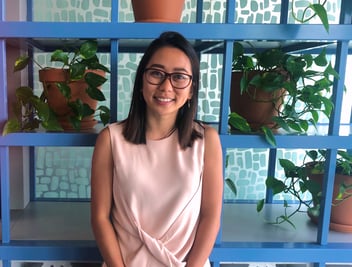Design thinking key to solving problems of the future
Problem-solving needs to evolve if we’re to meet global challenges successfully, according to Time’s 2019 Kid of the Year Gitanjali Rao, who is championing a design-thinking approach to STEM-field education and innovation worldwide.
Presenting a keynote address at Ozwater’21, 15-year-old inventor and author Gitanjali Rao said it’s time to move away from linear thinking and start collaborating to meet complex new challenges.
“The traditional idea of linear problem solving is increasingly giving way to an alternate approach of design thinking. It’s more focused on the impact to the end users. Instead of narrowing down choices, it’s allowing us to explore new choices first,” she said.
“Instead of solving every problem by breaking it down and analysing it, we can try to put combinations together, get comfortable with beta versions, iterating through prototypes, and learning from failure.
“For some reason, design throughout the years has focused on a lot of small things — bevelled edges, cool interfaces and Bluetooth connections. And that’s all great, but it needs to expand to solve some of the biggest problems that we see today, like climate change, pollution, privacy and pandemics.”
Five steps
Rao’s approach is a simplified step towards this goal, distilled to five steps: observe, brainstorm, research, build and communicate.
“Each step of the process has its own significance towards developing and coming up with a solution,” she said.
“Observe — pay attention to things around you and try to identify problems that have already been discussed, or are fairly obvious to you or the customers that you serve. Then, brainstorm — quantity over quality is key in this step. Break down all the ideas possible to solve the identifiable problem.
“Research — spend time looking for resources in the area of relevance to the problem and potential solutions, attempting to narrow down your ideas to one primary solution.
“Build — take some time to sketch what exactly this vision of yours might look like. It's better to do this earlier than later because it lets you visualise your work, even if it's in progress.
“The last step is communicate — it is always important to tell others about your work so that you spread awareness on the problem you are solving, but also you are making others aware of what you have done to tackle it.”
Inclusive solutions
Rao said her aim in promoting this design-thinking approach to innovation is to increase the involvement of everybody in creating solutions to the world’s biggest problems.
“The involvement of everyone, no matter their age, where they are, or the skill sets that they have, is more important than ever to coming up with solutions to tackle some of the biggest problems,” she said.
“My generation is growing up in a place where we are seeing problems that have never existed before. And many are raising their voices, but there’s a need for everyone to use their hands to build and suggest ideas that will impact the future in the community at large.
“We are looking for a sustainable world, and that word gets shot around, one that everyone wants to live in, and youth play a role in this.”
In order to enable everyone to contribute to solving the increasingly complex problems facing the world today, Rao said ensuring education for all is of primary importance.
“In the coming decade and beyond, we need to alleviate problems of availability to educational resources around the world, especially in economically disadvantaged countries,” she said. “Around 255 million children worldwide do not have access to education, irrespective of the current pandemic, putting them in real danger of being left behind and limiting their opportunities going forward for the rest of their lives.
“The good news is we have the technology to support it. Many of the common problems in mass education today are a lack of infrastructure, inability to physically go to school, and shortage of teachers, which can all be eliminated by remote learning.
“We are already being pushed to innovate in this area due to COVID-19. And with the leaps we have made in wireless network bandwidth and 5G technology, it is 100% possible to provide accessible, quality education and learning to anybody, anywhere.
“Just like food, water and shelter, the internet should be a right for every individual in the future.”
Rao encourages all water professionals to do their part in supporting the next generation of problem solvers by supporting them.
“I can tell you from personal experience that mentorship is absolutely life changing,” she said.
“Youth have the power to change the future, to create a sustainable world and environment. My challenge to you is to say yes. If a student asks to work with you, say yes. If a student has a question, say yes. Because your support makes a difference.”


